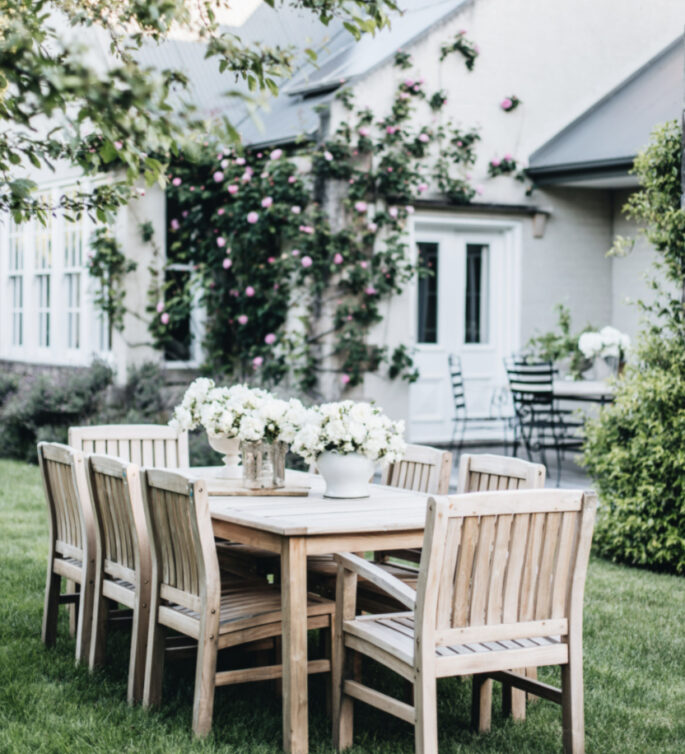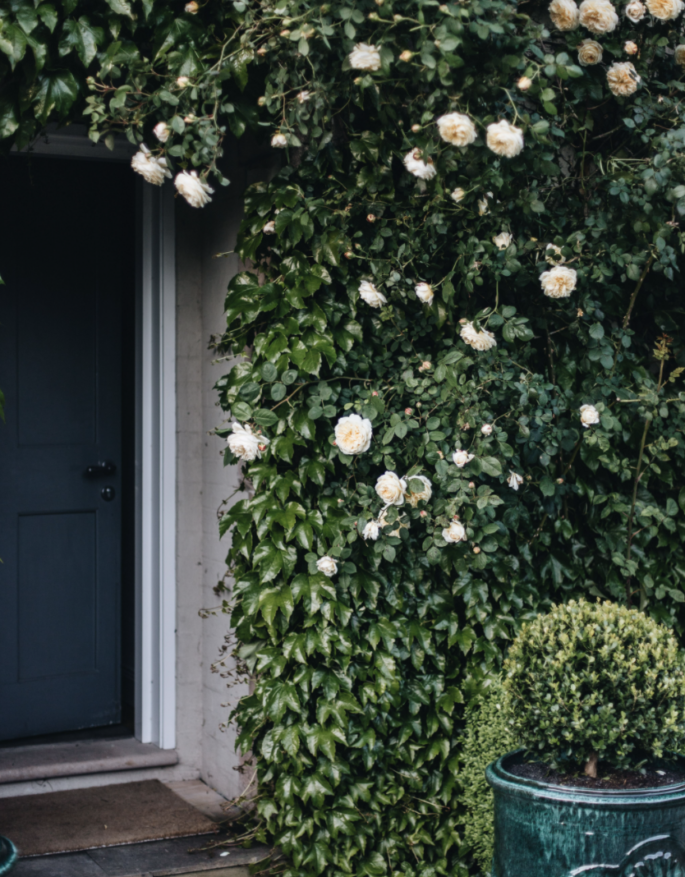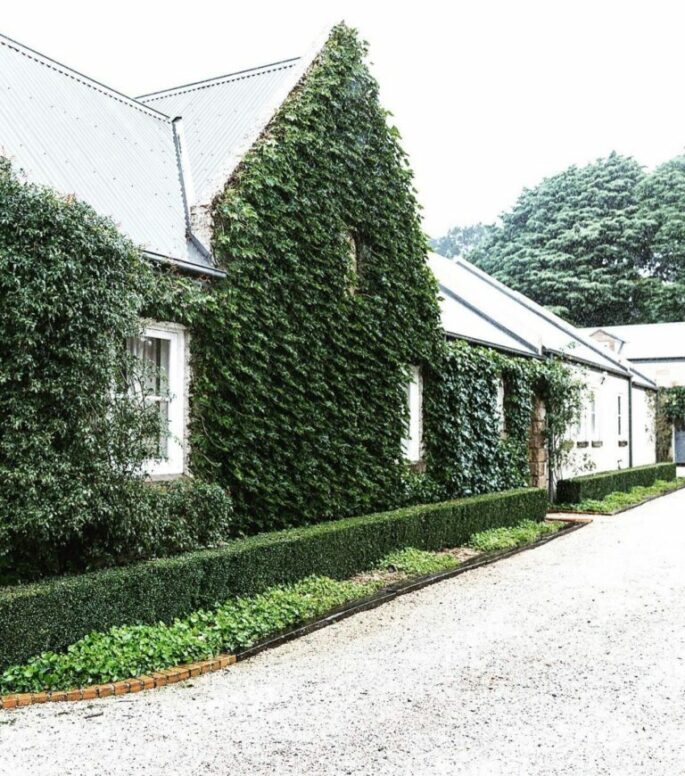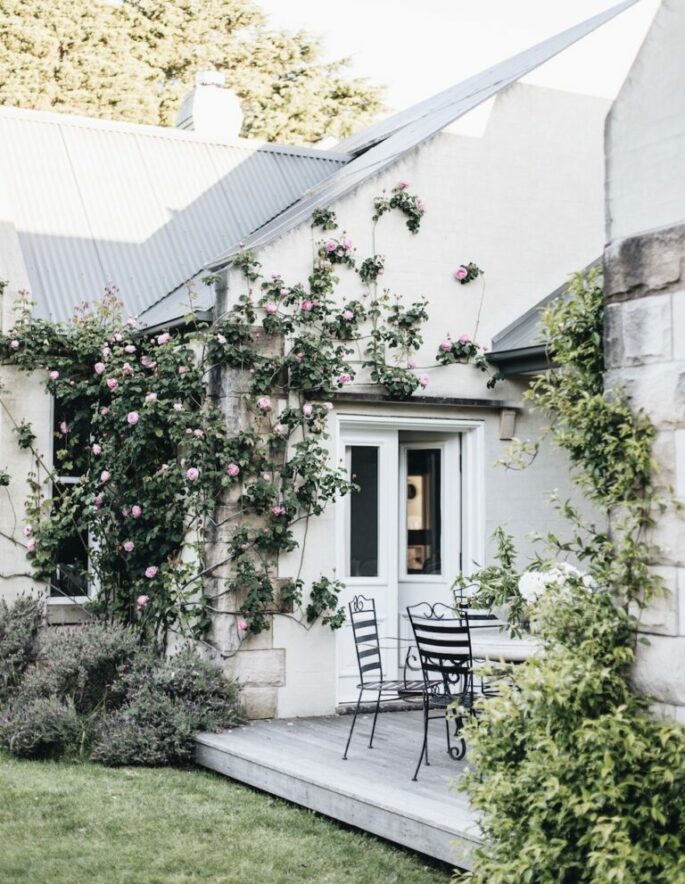This is a good time to add some icing to the garden cake by planting a climber or two. But not just any old climber, in any old place and in any old way, otherwise the disappointing mishmash can all end in tears.
Whereas in nature climbers use other plants to achieve often limitless heights, in a garden many of us plant them on walls and fences, to clamber over pergolas and up various free-standing structures. Read more, ‘Want a Gorgeous Garden Fast? Here’s What to Plant.’
They will cover anything ugly, soften any hard surface and become a textural backdrop for other plants in the foreground.
Leading US blog Gardenista explains, “some vines grow upward (climbing), some creep (ground covers) and others grow downward (trailing). Most are fast growers and with support from a trellis, arbor, or pergola, vines can be trained to cover nearly any surface. Their long stems latch onto walls, rocks, and vertical supports to grow toward sunlight.” Here are some points to consider:

Climbing wild roses pictured at Melissa’s country home. Photo: Abbie Melle
Know your climbers:
A few (climbing hydrangea, ivy) cling with aerial roots and need brick or rough mortar (rather than wooden fences) on which to get a grip. Some (jasmine, honeysuckle) twine upwards and therefore need vertical supports and careful pruning once they achieve their limit. Others (clematis) loop their leaf stalks or produce springy tendrils (ornamental vines) to cling on to anything fine enough (wooden fences, structures and trellis need therefore to be clothed in chicken wire). Read more, ‘Key Outdoor Trends To Make The Most of Your Garden All Year.’
Climbing roses will need the space to have their stems fanned out and tied in (with Flexi-Tie, ideally to strong, horizontal wires).
Support:
Whatever you choose, it is important to get the right supports in place before you plant, so you can start your plant on the right path upwards – and can remove as soon as possible the ubiquitous bamboo cane/ stapled green plastic ties it was inevitably sold with. Read more, ‘Making a Modern Garden.’
Site:
Climbers (many of them natural woodlanders) grow compulsively upwards towards the light, to flower in the sun. Few will perform well on a sunless north-facing wall (even “shade-loving” climbing hydrangeas do far better with more sun). Getting the site right is most important in the case of planting on a shared fence – your neighbours will be delighted if you get it wrong and all the flowers face in their direction. Read more, ‘Designing A Garden? You’ll Need a Plan.’

Ivy and climbing roses adorn the entrance of Melissa’s country home. Photo: Abbie Melle
Space:
Plant climbers at least 45cm away from a fence or wall to ensure they have enough root room/moisture. Be aware, particularly, of what is planted on the other side of fences (conifers? laurels?) that will provide damaging competition. Read more, ‘Landscaping Don’ts: 10 Design Mistakes To Avoid.’
Soil improvement:
Climbers are greedy feeders – they need to be, to produce all that top growth. Good soil preparation before you plant is important. For a large clematis, for example, excavate and improve with organic matter an area at least three times as wide as its pot and half as deep again, and mulch after planting, too.
Occasionally water deeply in the first summer after planting.

Melissa’s Country House features an entire exterior side wall of Boston ivy – a perennial climbing vine and vigorous grower (its reach can top nine metres at maturity).
Three things to avoid
- Don’t be tempted to shoehorn a needy, greedy climber into a strip of bad soil between a wall and path. It will probably die, and if by some miracle it doesn’t, it may end up blocking the path
- Beware of planting the most rampant clematis in a small space.
- Many climbers are disappointing when grown in containers. There are some exceptions (e.g. compact clematis bred for the purpose), but most do best with deep cool root runs and even moisture, both hard to guarantee in a container.

Climbing roses at Melissa’s country house. Photo: Abbie Melle
Tip for pruning
Gardeners playing in a large landscape may choose to cut all the stems back, while small-space gardeners, for whom the temporary total loss of the shrub’s structure might be problematic, might decide to cut back half the stems now and the rest in early July. The cuttings can be used in eye-catching twiggy domes to support border perennials.

Rambling roses cloak the wall at Melissa’s country house. They tend to grow faster than climbers and like to sprawl. Photo: Abbie Melle


